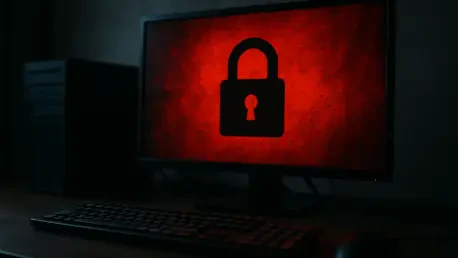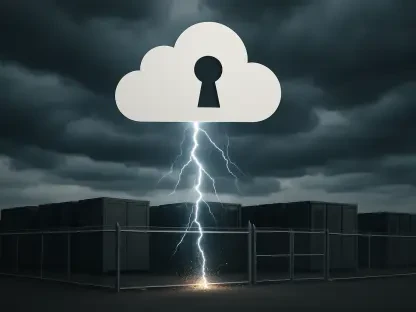Imagine a single cyberattack bringing essential public services to a grinding halt across an entire nation, a nightmare that became reality for Sweden when Miljödata, a vital IT supplier serving roughly 80% of the country’s municipal governments, fell victim to a devastating ransomware attack on August 23, 2023. The breach has disrupted operations for nearly 200 municipalities and regional entities, exposing the fragility of interconnected systems in the public sector. As critical HR functions grind to a standstill, the incident raises alarming questions about supply chain security and the readiness of governments to fend off increasingly sophisticated cyber threats. This event coverage delves into the unfolding crisis, its immediate fallout, and the broader lessons it imparts for cybersecurity resilience.
Breaking Down the Cyber Incident at Miljödata
The ransomware attack on Miljödata has sent shockwaves through Sweden’s public infrastructure, highlighting the perils of relying on centralized IT providers. Detected in late August 2023, the breach targeted systems integral to human resources management, affecting a vast network of municipal operations. The scale of disruption underscores how a single point of failure can ripple outward, paralyzing essential services that citizens depend on daily.
This incident is not just a technical failure but a stark reminder of systemic vulnerabilities in public sector supply chains. With Miljödata’s systems down, local governments struggle to manage basic administrative tasks, revealing the depth of dependency on third-party providers. The urgency to resolve this crisis has mobilized national resources, setting the stage for a detailed examination of response efforts and long-term implications.
Critical Updates and Analysis of the Attack
The ransomware incident at Miljödata continues to evolve, with new details emerging about the scope of the damage and the coordinated efforts to mitigate it. This section unpacks the key developments, from official responses to expert insights, painting a comprehensive picture of a crisis that transcends a single company. It also explores why such attacks are becoming a favored tactic among cybercriminals targeting public entities.
Swift Government Reaction and Containment Efforts
In the wake of the attack, Swedish authorities acted promptly to address the escalating situation. Civil Defense Minister Carl-Oskar Bohlin has taken a hands-on role, overseeing the national response while collaborating with CERT-SE, Sweden’s cybersecurity hub. Their immediate focus has been on supporting Miljödata and its clients to limit further damage and restore critical operations as quickly as possible.
A parallel police investigation seeks to trace the origins of the breach and identify the perpetrators behind it. Reports indicate a ransom demand of 1.5 Bitcoin, roughly equivalent to $163,245, adding a layer of complexity to the response strategy. The government’s swift actions reflect a determination to not only contain the current threat but also prevent future incidents of this magnitude.
Widespread Disruption Across Municipal Services
The tangible impact of the attack is felt most acutely at the municipal level, where daily operations have been severely hampered. Regions like Halland and Gotland have raised concerns over the potential exposure of personal data, a worrying prospect for citizens already grappling with service interruptions. Systems managing sick leave, injury reporting, and other HR functions remain offline, creating chaos for public employees and administrators alike.
This operational paralysis extends to hundreds of entities, disrupting the rhythm of governance and public service delivery. The societal stakes are high, as delays in routine processes erode trust in local institutions. Public concern over data privacy continues to mount, amplifying the need for transparent communication and robust recovery measures.
Cybersecurity Experts Warn of Supply Chain Risks
Cybersecurity specialists have been quick to point out the strategic nature of targeting supply chain networks like Miljödata. Andrew Lintell from Claroty notes that attacking a single supplier offers cybercriminals a disproportionate level of disruption across multiple organizations. This tactic maximizes impact with minimal effort, making it an attractive option for threat actors seeking widespread chaos.
Drawing comparisons to previous incidents, such as the 2022 Tietoevry breach in Sweden, experts stress that such vulnerabilities are not new but remain inadequately addressed. They advocate for rigorous vendor security assessments and contingency planning as essential defenses. Without these proactive steps, public sector entities risk repeated exposure to similar threats over the coming years.
Insights from a Surprisingly Low Ransom Demand
One puzzling aspect of this attack is the relatively modest ransom demand, which stands in contrast to the extensive damage caused. Unlike high-profile ransomware campaigns often linked to well-known groups, no specific cybercrime syndicate has claimed responsibility for this incident. This suggests that even less organized or less sophisticated actors can exploit supply chain weaknesses to devastating effect.
The situation illustrates a shift in the cyber threat landscape, where the scale of harm is not always tied to the complexity of the attack or the size of the ransom. It serves as a cautionary tale for organizations that might underestimate smaller threats, highlighting that any breach can have outsized consequences when critical systems are involved.
Enduring Consequences and Future Directions
Looking back, the ransomware attack on Miljödata marked a pivotal moment for Sweden’s public sector, exposing deep-seated vulnerabilities in supply chain security. The incident affected hundreds of municipalities, disrupted essential services, and sparked widespread concern over data privacy. It stood as a sobering example of how interconnected systems, while efficient, could become liabilities when not adequately protected.
Moving forward, the focus must shift toward actionable solutions to prevent recurrence. Governments and public entities should prioritize comprehensive risk assessments of third-party providers, ensuring stringent security standards are met. Investing in real-time monitoring and incident response capabilities will be crucial to detect and neutralize threats before they escalate.
Additionally, fostering collaboration between national cybersecurity agencies, local governments, and private suppliers can build a unified front against cyber threats. Developing robust backup systems and contingency plans will help maintain service continuity during crises. As cyber threats evolve, this incident underscored the need for constant vigilance and adaptation, ensuring that lessons learned translate into stronger defenses for the future.









